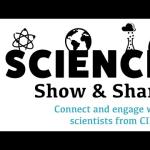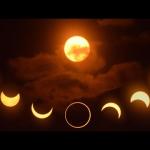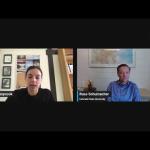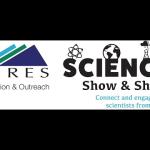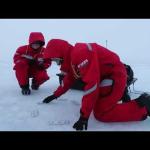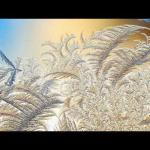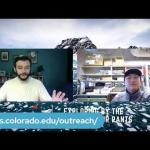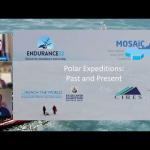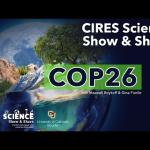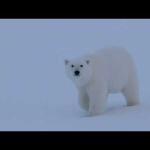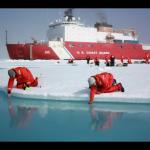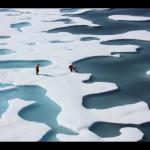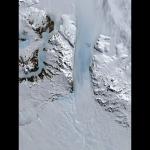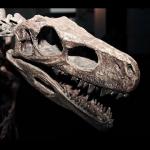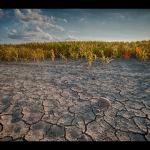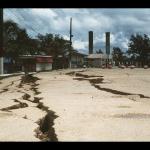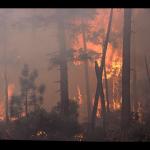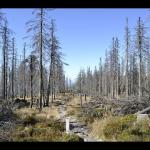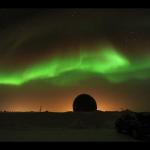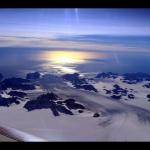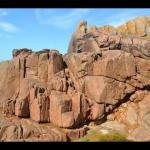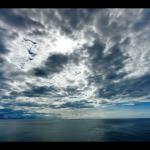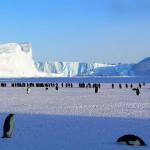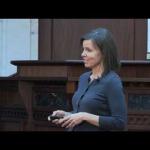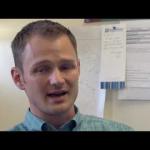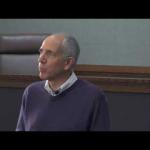Earth Science Stories
This video can be used a stand along video to learn more about fire ecology, or as part of the wildfire Data Puzzles lessons.
Recorded Science Talks
Science Show and Share
In this video, Dr. Kay describes her research as it relates to using observational data and climate models to understand the inequities of climate change, including why the Arctic is warming faster than the rest of the world.
Science Show and Share
In honor of the April 8th, 2024 total solar eclipse event, the NOAA Science On a Sphere program has developed datasets showing cloud cover potential, eclipse paths, and a narrated movie describing the total eclipse phenomenon.
Recorded Science Talks
Science Show and Share
Discover the intricate web of climate, drought, and climate change in the Southwestern US in this engaging 25-minute talk and 20-minute LIVE Q&A. Our seasoned climatologist, Russ Schumacher, will explore Colorado's climate, the significance of mountain snowpack, and the path of water to rivers. Uncover key climate metrics like temperature and precipitation and their impact on water resources. Explore the diverse nature of drought, its definitions, and its evolving face under the influence of climate change.
Recorded Science Talks
Science Show and Share
Join Daniela Pennycook from the Cooperative Institute of Research in Environmental Sciences, Dr. Mimi Hugues, Research Meteorologist at the National Oceanic and Atmospheric Administration, and Andy Anderson, Forecaster at the Sierra Nevada Avalanche Center in this special webinar on Atmospheric Rivers, learn all about what they are, how we measure them, and the impact this environmental phenomenon has had on the U.S. in 2023.
Science Show and Share
Join Lianna Nixxon aboard the Multidisciplinary Drifting Observatory for the Arctic Climate (MOSAiC) Expedition. This planetarium film was rendered in 2D to be viewed on YouTube.
Planetarium Film
Science Content Video
Science Show and Share
This webinar is part of a 4-part series on life at McMurdo Station, Antarctica. Watch this stand-alone video on seasons in the polar regions or watch all four webinars.
Recorded Science Talks
Science Show and Share
This webinar is part of a four-part series on life at McMurdo Station, Antarctica. Watch this stand-alone video on the upper atmosphere or watch all four webinar recordings.
Recorded Science Talks
Science Show and Share
This webinar is part of a 4-part series on life at McMurdo Station, Antarctica. Watch this stand-alone video on seasons in the polar regions or watch all four webinars.
Recorded Science Talks
Science Show and Share
This webinar is part of a four-part series on life at McMurdo Station, Antarctica. Watch this stand-alone video on the upper atmosphere or watch all four webinar recordings.
Recorded Science Talks
Science Show and Share
This webinar is designed to be stand alone resource.
Science Show and Share
In this video, Maxwell Boykoff and Climate Literacy and Energy Awareness Network (CLEAN) program coordinator Gina Fiorile inspire teachers and other audience members by describing the work that scientists and climate activists are doing worldwide.
Science Show and Share
In this stand-alone video, Dr. Matthew Burgess talks about science policy and how math, economics, and climate science are related.
Science Show and Share
Videographer Lianna Nixon presented about her experiences on the MOSAiC Expedition and filming a planetarium show in the Arctic Circle.
Recorded Science Talks
Science Show and Share
In this stand alone webinar, videographer Lianna Nixon presents about her experiences on the MOSAiC Expedition and filming a planetarium show in the Arctic Circle.
Science Show and Share
In this stand-alone video, Dr. Walt Meier presents on Sea Ice (What it is and why we study it).
Science Show and Share
In this stand-alone webinar, Dr. Ryan Cassotto presents on: Radars and Remote Sensing of Glaciers.
Science Show and Share
In this stand-alone webinar, Dr. Julio Sepúlveda presents: What do fossil molecules tell us about Earth’s history and the extinction of dinosaurs?
Science Show and Share
In this stand-alone webinar, Dr. Rosimar Rios-Berrios presented on her research in hurricanes, cyclones, and forecasting.
Science Show and Share
In this stand-alone webinar, Dr. Hoell presents on Flash Droughts.
Science Show and Share
In this stand-alone webinar, Learn about seismology with Mel Zhang, in this 30-minute webinar on seismology - what it is and how Mel got into it.
Science Show and Share
In this stand-alone webinar, Joshua (Shuka) Schwarz is a research scientist in NOAA's Chemical Science Laboratory, talks about wildfire, crop burning smoke, and what it's like to be a scientist.
Science Show and Share
In this stand-alone webinar, Dr. Koontz presented on: Understanding Where Wildfires and Insects Kill Trees Using Drones and Satellites.
Science Show and Share
CU Boulder photographer and videographer Amy Richman spent months in the Arctic last year on leg 1 of MOSAiC. This planetarium show allows viewers to experience what Amy witnessed: finding the initial ice floe, setting up the network of instruments and science research camps on the ice, and the seasonal transition from daylight into 24 hours of polar night.
Planetarium Film
In this webinar recording, Dr. Rick Saltus, and Dr. Neesha Schnepf presented on their recent research in geomagnetism and talk about their crowd-sourcing app: CrowdMag
Recorded Science Talks
Science Show and Share
In this stand-alone webinar, Mylène Jacquemart talked about her research working to ID triggers of sudden glacier detachments: destructive glacial process that buried kilometers of Alaskan forest.
Science Show and Share
In this stand-alone webinar, Dr. Lincoln Pitcher presented on recent research about meltwater production, transport and export from the Greenland Ice Sheet.
Science Show and Share
In this stand-alone webinar recording, Dr. Peter Martin presented on his research in and of New Guinea. In particular, when did it form and how it impacted historical climate change.
Science Show and Share
In this webinar, Dr. Amy Butler talked about the Polar Vortex. She focused on why she became an atmospheric scientist, presented a brief overview of the stratosphere and the ozone layer, and discussed how we might use information about the stratospheric polar vortex to make extended-range weather forecasts.
Science Show and Share
In this stand-alone webinar, Dr. Elizabeth Thompson discussed how learning about weather can also teach us a lot about the ocean.
Science Show and Share
In this stand-alone webinar, Janice Bytheway talked about precipitation - how it forms, and a little bit on how we observe and predict it.
Science Show and Share
In this stand-alone webinar, Dr. Ted Scambos presented a 'science travelogue' for the continent of Antarctica.
Science Show and Share
In this video, Assistant Attorney General Kate Ryan from the Colorado Supreme Court gives an overview of water rights across the Western US and the Prior Appropriation Doctrine. Learn why this doctrine is important for learning about water in the west. This video is part of the Water in the Western US project.
Science Content Video
In this lecture, Dr. Ken Novak from the US Bureau of Reclamation examines a case study on the water supply and demand of the Colorado River Basin. Learn about how increasing demand for water affects reservoirs and other infrastructure. This is part of the Water in the Western US lecture series.
Science Content Video
This lecture by Dr. Mark Squillace of the University of Colorado Law School covers water, public rights, and the Endangered Species Act. This video is part of the Water in the Western US lecture series.
Science Content Video

